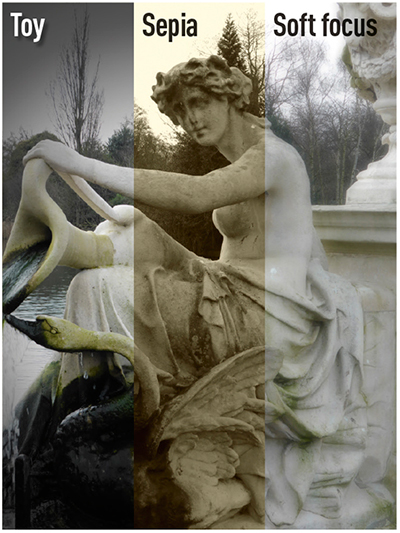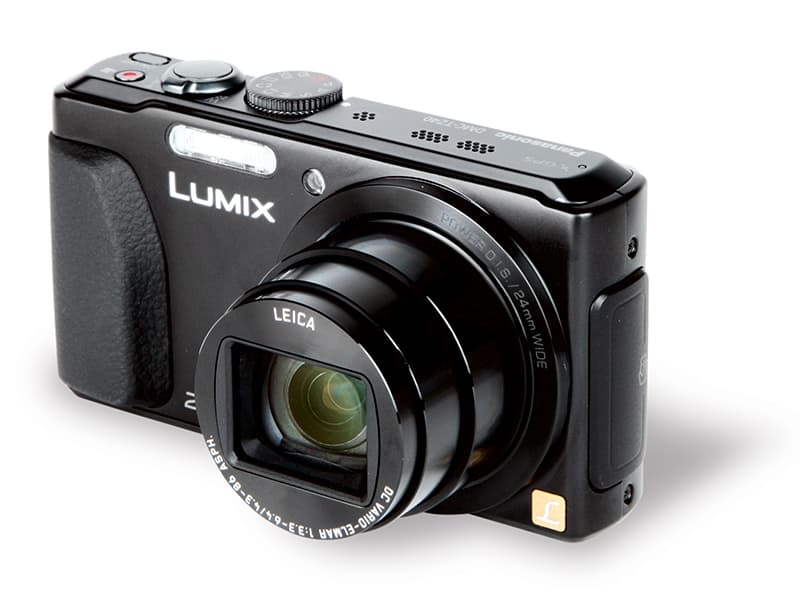Panasonic Lumix DMC-TZ40 – At a glance
- 18.1-million-pixel MOS sensor
- 24-480mm (35mm equivalent) f/3.3-6.4 Leica DC Vario-Elmar lens
- Built-in GPS and Wi-Fi with NFC technology
- 3in, 920,000-dot rear LCD touchscreen
- Continuous high speed shooting up to 10fps
- Street price around £330
Panasonic Lumix DMC-TZ40 review – Introduction
The advantages of a travel compact camera are that it offers a wide optical zoom range, numerous features and various shooting modes, all in a body small enough to slip into a trouser pocket. Panasonic’s TZ series has long been at the forefront of this market, so we were keen to get our hands on the company’s latest flagship TZ model, the Panasonic Lumix DMC-TZ40.
A cursory glance at the TZ40’s specification reveals a number of new features not present on its predecessor, the TZ30, which was launched last year. This latest travel compact could well be the model, then, to keep Panasonic at the forefront of this market.
Panasonic Lumix DMC-TZ40 review – Features
New travel compact camera models usually feature improvements in the zoom range or the pixel count with each generation, and in the Lumix DMC-TZ40 it’s the sensor that has changed.
Once again, it’s a 1/2.3in (6.17×4.55mm) CMOS type, but with an increased resolution of 18.1 million pixels instead of the TZ30’s 14.1 million pixels. The new sensor is, therefore, a little crowded, which places it at a greater risk of suffering from high levels of noise.
Panasonic has implemented new algorithms to the Venus processing engine’s noise reduction (NR), called Wavelet NR and Edge Smoothing NR, to create ‘smooth edge detail’ even when the camera is used in low-contrast light. As in the TZ30, the ISO 100-3200 range can be expanded to ISO 6400.
 At the heart of a travel compact is its zoom lens, and the TZ40 uses the same 20x, 4.3-86mm (24-480mm equivalent) Leica optic as its predecessor, with zoom control available in both still and movie capture.
At the heart of a travel compact is its zoom lens, and the TZ40 uses the same 20x, 4.3-86mm (24-480mm equivalent) Leica optic as its predecessor, with zoom control available in both still and movie capture.
Its maximum f/3.3 aperture at the wide end is reduced to f/6.4 when shooting at the tele end, which means less light enters through the lens when zoomed in. Fortunately, more light can be received through the use of slower shutter speeds, as the lens is stabilised to reduce the blur caused by camera shake during capture.
Panasonic’s optical image stabilisation (OIS) has also been updated for use in the TZ40. It is a hybrid OIS for both still and video capture that provides five-axis correction and it is able to compensate for the main types of movement, such as front-to-back and side-to-side tilt.
When shooting handheld at telephoto settings, it is possible to use shutter speeds as slow as 1/15sec yet still achieve a shake-free result, which is impressive.
Image (right): Using the 20x optical zoom to its limits means that distant subjects can fill the frame. Stabilisation works well, too – this picture was recorded at 1/30sec
Perhaps one of the more notable areas of development is that Wi-Fi has been introduced, which allows remote shooting, sharing of images and playback on compatible devices, such as DLNA televisions. This level of control trumps many other wireless camera set-ups.
Panasonic has introduced Near Field Communication (NFC) technology too, which is designed to alleviate the complication of wireless connections. It works by physically placing the two NFC-equipped devices close together to initialise a connection.
GPS remains, with maps supplied on a separate disc to plot the places where photos have been taken. This time, GPS complies with Russian-operated satellite GLONASS, which should provide improved accuracy, especially in built-up areas.
There are numerous shooting modes, most of which are found either in the creative control or scene mode menus, and between them they cover most of life’s events. Noteworthy scene modes include HDR, while creative control offers a neat impressive art mode; panorama shot has its own place on the shooting-mode dial for quick access, alongside the standard PASM exposure controls.

Image: There are 14 creative control picture effects, including the toy, sepia and soft focus featured in this picture
The high-speed shooting modes go as fast as 10fps at full resolution for a short six-frame burst, but for continuous-tracking AF the maximum speed is 5fps, which is still very good.
As in the company’s current compact system camera models, Panasonic describes the TZ40’s AF system as light-speed AF, which is claimed to operate as fast as 0.1secs. It’s an individually selectable, 23-point set-up, and through the rear LCD touchscreen the AF point can be selected by touch, which is a good feature.
As I would expect from a flagship Panasonic compact camera, the video capability is impressive. It is possible to record full 1920×1080-pixel HD videos at 50p or 25p with PASM exposure control.
The Panasonic Lumix DMC-TZ40 is a pocket travel camera that offers a comprehensive feature set.







